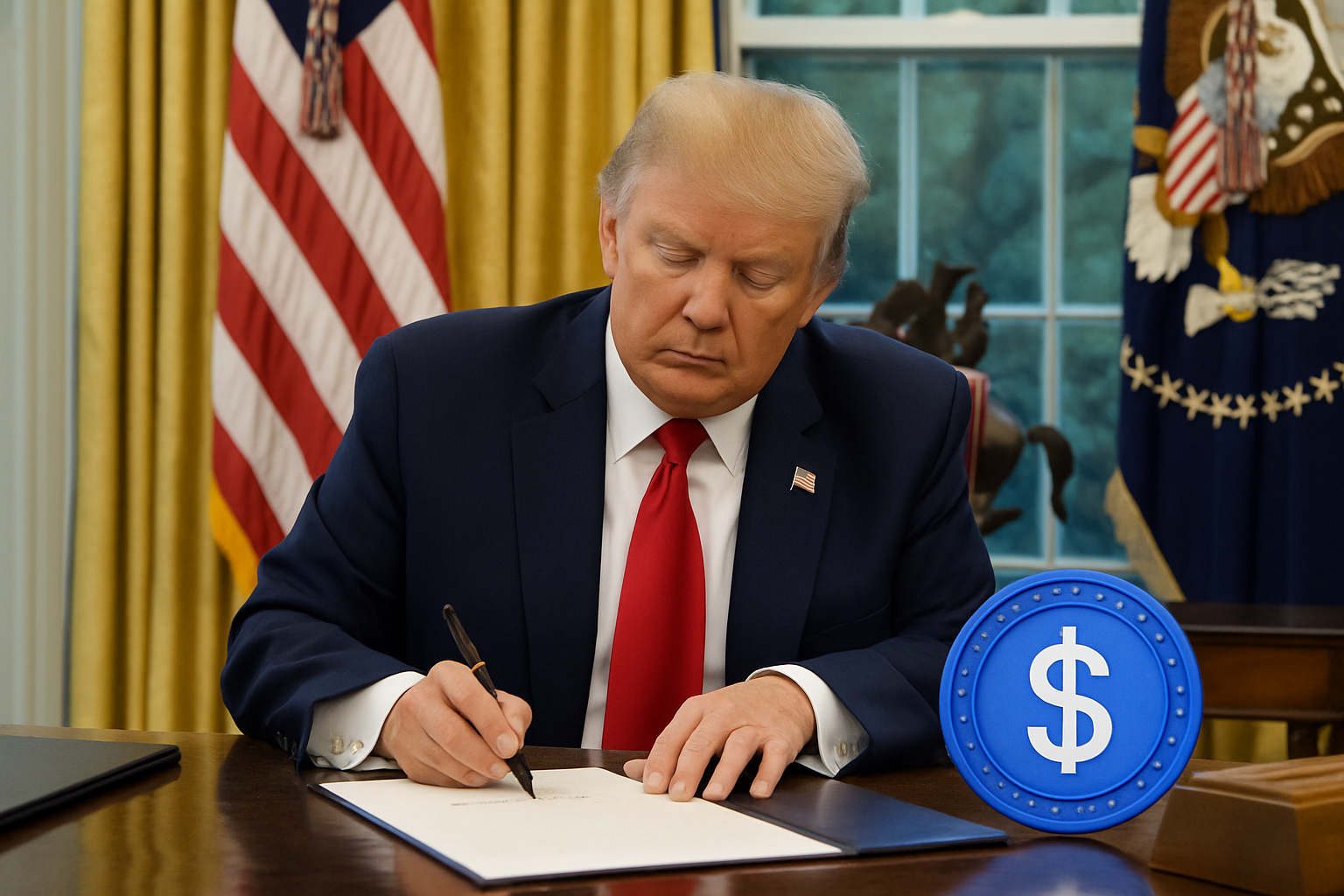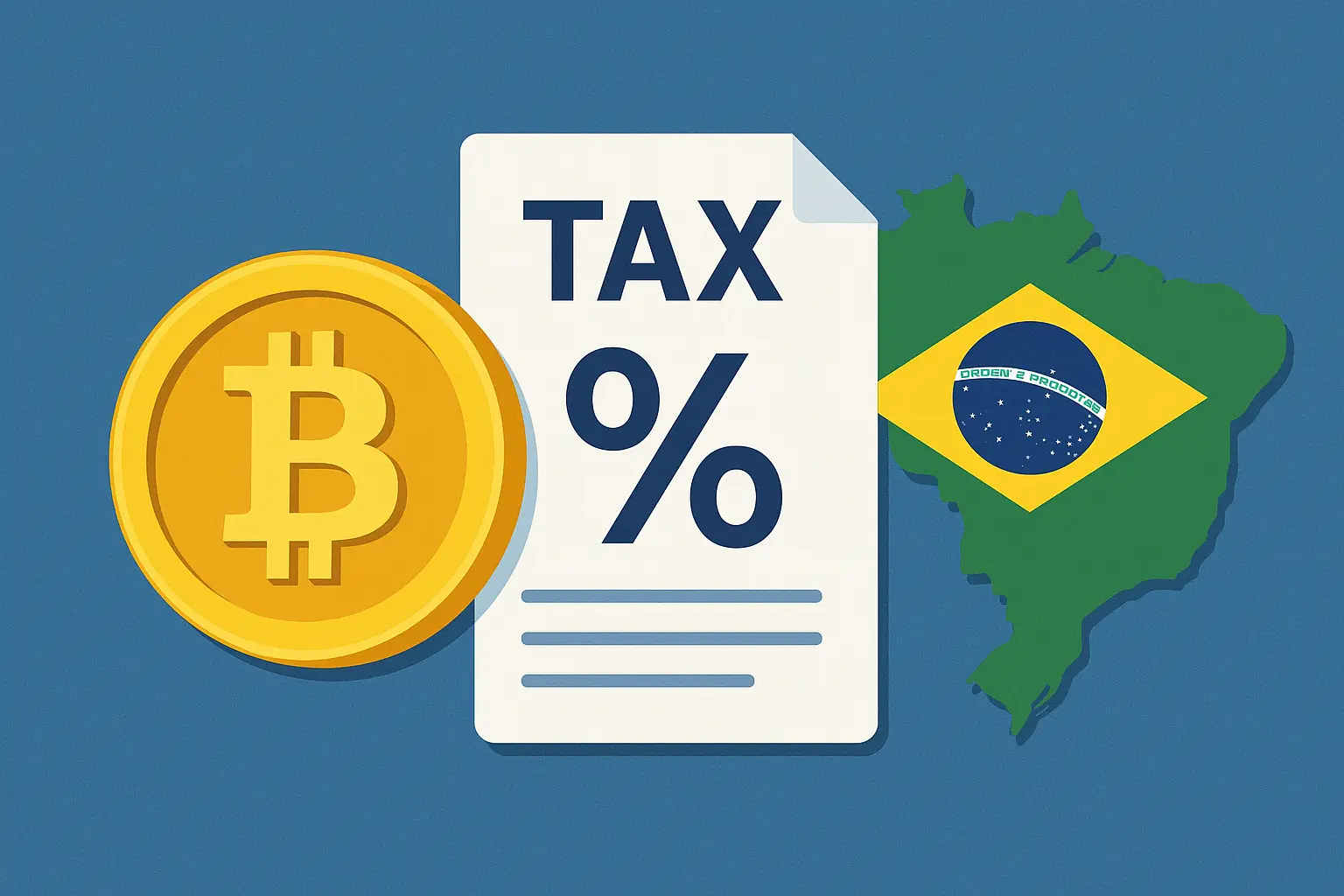Cryptocurrency News
Trump Signs Groundbreaking U.S. Stablecoin Law: A Turning Point In Cryptocurrency Regulation

Introduction
In a historic move that could define the next decade of digital finance, former President Donald Trump signed into law a bill that establishes a federal regulatory framework for stablecoins. This momentous event, which unfolded during what some are calling “Crypto Week” in Washington, D.C., marks a seismic shift in the federal government’s approach to cryptocurrency. For the first time, lawmakers have crafted bipartisan legislation aimed squarely at balancing innovation with accountability in the crypto industry. The stablecoin law is the first of its kind to address digital dollars tied to real-world assets and promises to reshape the future of finance.
The Road To Federal Stablecoin Regulation
Cryptocurrencies have long occupied a legal gray area in the United States. For years, regulatory uncertainty kept institutional investors on the sidelines and left entrepreneurs grappling with an inconsistent patchwork of state and federal rules. While the Securities and Exchange Commission (SEC) and the Commodity Futures Trading Commission (CFTC) have attempted to apply existing securities and commodities laws to digital assets, there was no legislation specifically designed to address stablecoins.
Stablecoins are digital currencies pegged to a reserve asset, typically the U.S. dollar, and are used to facilitate trading, enable payments, and maintain price stability in the volatile crypto markets. Their rapid adoption by exchanges, fintechs, and even consumers triggered concerns from lawmakers and regulators about transparency, solvency, and consumer protections. The new legislation is a response to these growing concerns and follows months of closed-door discussions among policymakers, lobbyists, and crypto stakeholders.
Key Provisions Of The Stablecoin Law
The newly signed law lays out specific rules that issuers of U.S. dollar-backed stablecoins must follow. At the core of the law is a requirement that all stablecoins be backed one-to-one by high-quality liquid assets such as U.S. dollars or Treasury securities. This provision seeks to eliminate the risk of fractional reserve backing, which previously allowed some stablecoin issuers to hold illiquid or risky assets.
Additionally, the law mandates that issuers undergo regular audits and public disclosures to ensure the integrity of their reserves. It also introduces a registration requirement with the Federal Reserve or other designated federal agencies, depending on the issuer’s scale and operations. These registration and disclosure protocols are designed to bring stablecoin issuance closer in line with traditional banking and financial standards, thereby boosting consumer confidence and financial stability.
The legislation delegates primary oversight authority to the Commodity Futures Trading Commission, shifting the balance of crypto regulation away from the SEC, which has historically taken a more aggressive stance. This strategic shift could encourage innovation by creating a more predictable and permissive regulatory environment.
Political Significance And Trump’s Motivations
The passage of the stablecoin bill is politically significant for several reasons. For one, it represents a rare moment of bipartisan cooperation on a controversial topic. While Democrats and Republicans remain divided on many economic issues, they found common ground in the need to regulate digital assets without stifling technological progress.
For former President Trump, who has returned to political prominence, signing this bill into law represents a strategic victory. During his 2024 campaign, Trump adopted a pro-crypto stance, portraying himself as a defender of financial freedom and innovation. His backing of the stablecoin bill aligns with that narrative and serves to distinguish his administration’s policies from those of his predecessors, particularly in contrast to earlier Democratic efforts to clamp down on the crypto industry.
The move also comes at a time when China, Europe, and other global powers are racing to launch their own digital currencies. By creating a clear legal framework for stablecoins, the United States signals its intent to remain a leader in the digital finance revolution and compete effectively on the global stage.
Market Reaction And Economic Implications
The crypto market responded positively to the announcement. Bitcoin, Ethereum, and several major altcoins surged in value following the law’s passage, with Bitcoin crossing the $120,000 mark for the first time in history. Investors interpreted the regulatory clarity as a green light for further institutional adoption.
Stablecoin issuers such as Circle and Paxos welcomed the move, with both companies already operating under transparent reserve models. Tether, the largest and most controversial stablecoin, issued a statement indicating its willingness to comply with the new rules and revamp its reserves accordingly. Major exchanges began updating their listing requirements to reflect compliance with the new law.
Beyond market reactions, the law has far-reaching economic implications. With increased legitimacy, stablecoins could become widely used in cross-border payments, remittances, decentralized finance applications, and even e-commerce. Traditional banks are expected to explore their own stablecoin offerings or partnerships with fintech companies. The potential for tokenized money markets and real-time settlement could transform the plumbing of global finance.
Challenges To Implementation
Despite the celebratory tone in political and crypto circles, the implementation of the stablecoin law is expected to face hurdles. One of the primary concerns is the capacity of regulators to effectively oversee a fast-moving and technologically complex industry. The CFTC, though seen as more innovation-friendly, may require additional resources and staffing to carry out its expanded mandate.
There is also the question of how the law will interact with existing state regulations. Some states, like New York, already have their own licensing regimes for digital asset businesses. Harmonizing federal and state requirements will be critical to avoiding regulatory fragmentation and promoting nationwide compliance.
Moreover, some smaller crypto startups have expressed concern that the cost of compliance could be prohibitive. The law’s emphasis on reserves, audits, and registration may favor larger, well-capitalized players and discourage new entrants from entering the space. Ensuring that innovation remains inclusive and decentralized will be a key challenge moving forward.
Global Perspective And Competitive Dynamics
The United States is not alone in its quest to regulate stablecoins. The European Union recently passed the Markets in Crypto-Assets (MiCA) framework, which includes rules for stablecoins and other digital assets. China has accelerated the rollout of its digital yuan, and countries like Singapore, Switzerland, and the United Arab Emirates have become crypto innovation hubs.
By establishing a federal framework for stablecoins, the U.S. positions itself as a credible competitor in the global race to define the future of money. The law sends a message to international regulators and investors that America is serious about fostering digital finance while safeguarding its economic system.
This competitive positioning is especially important as emerging markets explore dollar-pegged stablecoins as alternatives to local currencies. U.S.-backed stablecoins could become a tool of financial diplomacy, reinforcing dollar hegemony in the digital age.
The Broader Legislative Agenda
The stablecoin law is only one part of a broader legislative agenda unfolding in Washington. Two other bills—the Clarity Act and the Anti-CBDC Surveillance State Act—are making their way through Congress. The Clarity Act seeks to codify the definition of digital commodities and place most crypto assets under the purview of the CFTC. The Anti-CBDC Act would prohibit the Federal Reserve from issuing a central bank digital currency, reflecting concerns about privacy and state surveillance.
Together, these legislative efforts represent a coherent strategy to define the role of digital assets in the American economy. They reflect a growing recognition that the future of finance is digital and that the U.S. must act swiftly to shape that future on its own terms.
Conclusion
The signing of the federal stablecoin law marks a defining moment in the evolution of cryptocurrency regulation in the United States. It brings long-awaited clarity to stablecoin issuers, empowers innovation, and opens the door to mainstream financial adoption. For former President Trump, the legislation is both a policy triumph and a political statement. For investors, entrepreneurs, and regulators, it sets the stage for a more secure and scalable digital economy.
As the law enters its implementation phase, stakeholders across the crypto ecosystem will need to adapt, collaborate, and innovate within the new regulatory framework. While challenges remain, the foundation has been laid for a future in which digital assets are no longer fringe technologies but integral components of the global financial system.











